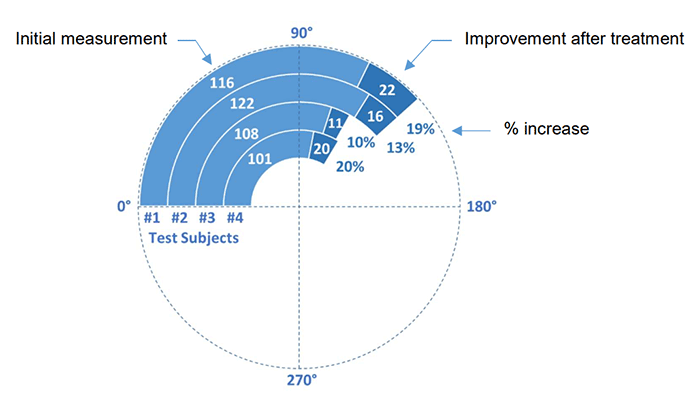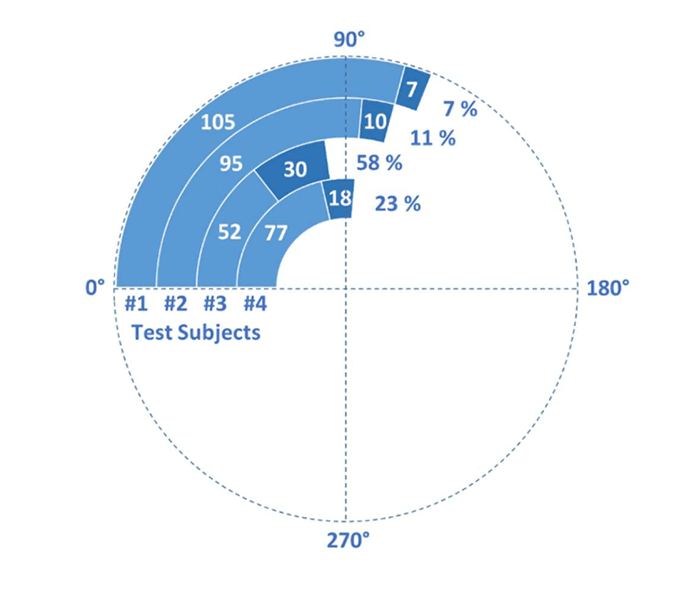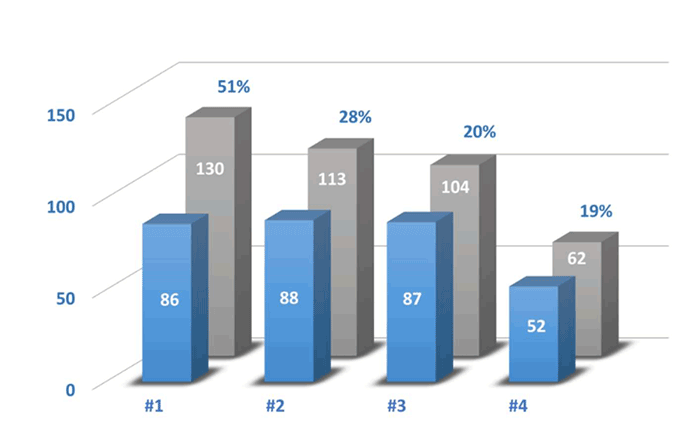The following graphs show the before & after percentages taken from four test subjects during Knee Range of Motion, Shoulder Range of Motion & Grip Strength tests.
Knee Range of Motion (in degrees)
The flexibility of the knee was measured on four separate test subjects, before and after treatment of the quadricep muscle. The range of motion increased in each case, showing an improvement in the overall length of the quadriceps. The graph below shows initial measurements in degrees, improvements after treatment, and the percentage increased in range of motion.

Shoulder Range of Motion (in degrees)
The flexibility of the shoulder was measured on four test subjects, before and after treatment. In each case, the range of motion increased, showing an improvement in the overall length of the pectoral muscle. The graph below shows the initial measurements in degrees, improvements and treatment and the percentage increases in range of motion.

Grip Strength (in lbs.)
Using a dynamometer, grip strength was used to measure the before and after treatment of the wrist flexor muscle group. On four separate test subjects, there was an improvement in grip force. The graphic below shows initial measurements, improvements and percentage increase of grip strength, in lbs.

